Analysis of Wind Turbine Distances Using a Novel Techno-Spatial Approach in Complex Wind Farm Terrains
Abstract
1. Introduction
2. Methodology
2.1. Description of the Site
2.2. Wind Data
2.3. Wind Turbine Characteristics
2.4. WAsP
3. Results and Discussion
- -
- For 84 m, 60 m and 40 m measurements, the wind roses are shown in Figure 5.
4. Conclusions
Author Contributions
Funding
Conflicts of Interest
References
- Parada, L.; Herrera, C.; Flores, P.; Parada, V. Wind farm layout optimisation using a Gaussian-based wake model. Renew. Energy 2017, 107, 531–541. [Google Scholar] [CrossRef]
- Hoxha, B.; Filkoski, R.V. Fluid interaction in a complex terrain wind farm. Przegląd Elektrotechniczny 2022, 1, 10–13. [Google Scholar] [CrossRef]
- Al-Addous, M.; Jaradat, M.; Albatayneh, A.; Wellmann, J.; Al Hmidan, S. The Significance of Wind Turbines Layout Optimization on the Predicted Farm Energy Yield. Atmosphere 2020, 11, 117. [Google Scholar] [CrossRef]
- Dragusha, B.; Hoxha, B. Impact of field roughness and power losses, turbulence intensity on electricity production for an onshore wind farm. Int. J. Power Electron. Drive Syst. IJPEDS 2020, 11, 1519–1526. [Google Scholar] [CrossRef]
- Peña, A.; Réthoré, P.; Laan, M.P. On the application of the Jensen wake model using a turbulence-dependent wake decay coefficient: The Sexbierum case. Wind Energy 2016, 19, 763–776. [Google Scholar] [CrossRef]
- Hunt, J.C.R.; Tampieri, F.; Weng, W.S.; Carruthers, D.J. Air flow and turbulence over complex terrain: A colloquium and a computational workshop. J. Fluid Mech. 1991, 227, 667–688. [Google Scholar] [CrossRef]
- Wood, N. Wind Flow Over Complex Terrain: A Historical Perspective and the Prospect for Large-Eddy Modelling. Boundary-Layer Meteorol. 2000, 96, 11–32. [Google Scholar] [CrossRef]
- Robertson, A.; Sethuraman, L.; Jonkman, J.M. Assessment of Wind Parameter Sensitivity on Extreme and Fatigue Wind Turbine Loads. In Proceedings of the 2018 Wind Energy Symposium, Kissimmee, FL, USA, 8–12 January 2018. [Google Scholar] [CrossRef]
- Rinker, J.M. Calculating the sensitivity of wind turbine loads to wind inputs using response surfaces. J. Phys. Conf. Ser. 2016, 753, 32057. [Google Scholar] [CrossRef]
- Porté-Agel, F.; Lu, H.; Wu, Y.-T. Interaction between Large Wind Farms and the Atmospheric Boundary Layer. Procedia IUTAM 2014, 10, 307–318. [Google Scholar] [CrossRef]
- Cabezón, D.; Migoya, E.; Crespo, A. A semi-parabolic wake model for large offshore wind farms based on the open source CFD solver OpenFOAM. ITM Web Conf. 2014, 2, 06002. [Google Scholar] [CrossRef]
- Gao, X.; Yang, H.; Lu, L. Optimization of wind turbine layout position in a wind farm using a newly-developed two-dimensional wake model. Appl. Energy 2016, 174, 192–200. [Google Scholar] [CrossRef]
- Ho, L.-H.; Sun, H.; Tsai, T.-H. Research on 3D Painting in Virtual Reality to Improve Students’ Motivation of 3D Animation Learning. Sustainability 2019, 11, 1605. [Google Scholar] [CrossRef]
- Frandsen, S. Turbulence and Turbulence-Generated Structural Loading in Wind Turbine Clusters; DTU-National Laboratory for Sustainable Energy, National Laboratory, Information Service Department: Roskilde, Denmark, 2007. [Google Scholar]
- Hasager, C.B.; Rasmussen, L.; Peña, A.; Jensen, L.E.; Réthoré, P.-E. Wind Farm Wake: The Horns Rev Photo Case. Energies 2013, 6, 696–716. [Google Scholar] [CrossRef]
- Tseng, T.L.B.; Garcia Rosales, C.A.; Kwon, Y.J. OPTIMIZATION OF WIND TURBINE PLACEMENT LAYOUT ON NON-FLAT TERRAINS. Int. J. Ind. Eng. 2014, 21. [Google Scholar] [CrossRef]
- Gharaibeh, A.; Al-Shboul, D.; Al-Rawabdeh, A.; Jaradat, R. Establishing Regional Power Sustainability and Feasibility Using Wind Farm Land-Use Optimization. Land 2021, 10, 442. [Google Scholar] [CrossRef]
- Manolesos, M.; Gao, Z.; Bouris, D. Experimental investigation of the atmospheric boundary layer flow past a building model with openings. Build. Environ. 2018, 141, 166–181. [Google Scholar] [CrossRef]
- Piqué, A.; Miller, M.A.; Hultmark, M. Laboratory investigation of the near and intermediate wake of a wind turbine at very high Reynolds numbers. Exp. Fluids 2022, 63, 1–13. [Google Scholar] [CrossRef]
- Vermeer, L.J.; Sørensen, J.N.; Crespo, A. Wind turbine wake aerodynamics. Prog. Aerosp. Sci. 2003, 39, 467–510. [Google Scholar] [CrossRef]
- Latinopoulos, D.; Kechagia, K. A GIS-based multi-criteria evaluation for wind farm site selection. A regional scale application in Greece. Renew. Energy 2015, 78, 550–560. [Google Scholar] [CrossRef]
- Yeghikian, M.; Ahmadi, A.; Dashti, R.; Esmaeilion, F.; Mahmoudan, A.; Hoseinzadeh, S.; Garcia, D.A. Wind Farm Layout Optimization with Different Hub Heights in Manjil Wind Farm Using Particle Swarm Optimization. Appl. Sci. 2021, 11, 9746. [Google Scholar] [CrossRef]
- Johari, M.K.; Jalil, M.A.A.; Shariff, M.F.M. Comparison of horizontal axis wind turbine (HAWT) and vertical axis wind turbine (VAWT). Int. J. Eng. Technol. 2018, 7, 74–80. [Google Scholar] [CrossRef]
- Zhao, X.; Hu, T.; Zhang, L.; Liu, Z.; Wang, S.; Tian, W.; Yang, Z.; Guo, Y. Experimental study on the characteristics of wind turbine wake field considering yaw conditions. Energy Sci. Eng. 2021, 9, 2333–2341. [Google Scholar] [CrossRef]
- Yang, Q.; Li, H.; Li, T.; Zhou, X. Wind farm layout optimisation for levelized cost of energy minimisation with combined analytical wake model and hybrid optimisation strategy. Energy Convers. Manag. 2021, 248, 114778. [Google Scholar] [CrossRef]
- General Electric, 3.4 MW Wind Turbine, Catalogue. Available online: https://en.wind-turbine-models.com/turbines/1339-ge-general-electric-ge-3.4-137 (accessed on 7 March 2022).
- Yılmaz, U.; Balo, F.; Sua, L.S. Simulation Framework for Wind Energy Attributes with WAsP. Procedia Comput. Sci. 2019, 158, 458–465. [Google Scholar] [CrossRef]
- Kamdar, I.; Ali, S.; Taweekun, J.; Ali, H.M. Wind Farm Site Selection Using WAsP Tool for Application in the Tropical Region. Sustainability 2021, 13, 13718. [Google Scholar] [CrossRef]
- Worku, M.Y. Recent Advances in Energy Storage Systems for Renewable Source Grid Integration: A Comprehensive Review. Sustainability 2022, 14, 5985. [Google Scholar] [CrossRef]
- Liang, H.; Zuo, L.; Li, J.; Li, B.; He, Y.; Huang, Q. A wind turbine control method based on Jensen model. In Proceedings of the 2016 International Conference on Smart Grid and Clean Energy Technologies (ICSGCE), Chengdu, China, 19–22 October 2016; pp. 207–211. [Google Scholar] [CrossRef]
- Porté-Agel, F.; Wu, Y.-T.; Chen, C.-H. A Numerical Study of the Effects of Wind Direction on Turbine Wakes and Power Losses in a Large Wind Farm. Energies 2013, 6, 5297–5313. [Google Scholar] [CrossRef]
- Leahy, K.; Gallagher, C.; Bruton, K.; O’Donovan, P.; O’Sullivan, D.T. Automatically Identifying and Predicting Unplanned Wind Turbine Stoppages Using SCADA and Alarms System Data: Case Study and Results. J. Phys. Conf. Ser. 2017, 926, 012011. [Google Scholar] [CrossRef]
- Wu, Y.-K.; Wu, W.-C.; Zeng, J.-J. Key Issues on the Design of an Offshore Wind Farm Layout and Its Equivalent Model. Appl. Sci. 2019, 9, 1911. [Google Scholar] [CrossRef]
- Moskalenko, N.; Rudion, K.; Orths, A. Study of wake effects for offshore wind farm planning. In Proceedings of the 2010 Modern Electric Power Systems, Wroclaw, Poland, 20–22 September 2010; IEEE: Piscataway, NJ, USA, 2010; pp. 1–7. [Google Scholar]
- Wu, Y.-T.; Porté-Agel, F. Large-Eddy Simulation of Wind-Turbine Wakes: Evaluation of Turbine Parametrisations. Bound. Layer Meteorol. 2011, 138, 345–366. [Google Scholar] [CrossRef]
- Hameed, S.S.; Ramadoss, R.; Raju, K.; Shafiullah, G. A Framework-Based Wind Forecasting to Assess Wind Potential with Improved Grey Wolf Optimization and Support Vector Regression. Sustainability 2022, 14, 4235. [Google Scholar] [CrossRef]
- Do, M.H.; Njiri, J.G.; Soeffker, D. Structural load mitigation control for wind turbines: A new performance measure. Wind Energy 2020, 23, 1085–1098. [Google Scholar] [CrossRef]
- Papatzimos, A.K.; Thies, P.R.; Dawood, T. Offshore wind turbine fault alarm prediction. Wind Energy 2019, 22, 1779–1788. [Google Scholar] [CrossRef]
- Shakoor, R.; Hassan, M.Y.; Raheem, A.; Wu, Y.-K. Wake effect modeling: A review of wind farm layout optimisation using Jensen’s model. Renew. Sustain. Energy Rev. 2016, 58, 1048–1059. [Google Scholar] [CrossRef]
- Yildirir, V.; Rusu, E.; Onea, F. Wind Energy Assessments in the Northern Romanian Coastal Environment Based on 20 Years of Data Coming from Different Sources. Sustainability 2022, 14, 4249. [Google Scholar] [CrossRef]
- Bontekoning, M.P.C.; Perez-Moreno, S.S.; Ummels, B.C.; Zaaijer, M.B. Analysis of the reduced wake effect for available wind power calculation during curtailment. J. Phys. Conf. Ser. 2017, 854, 12004. [Google Scholar] [CrossRef]
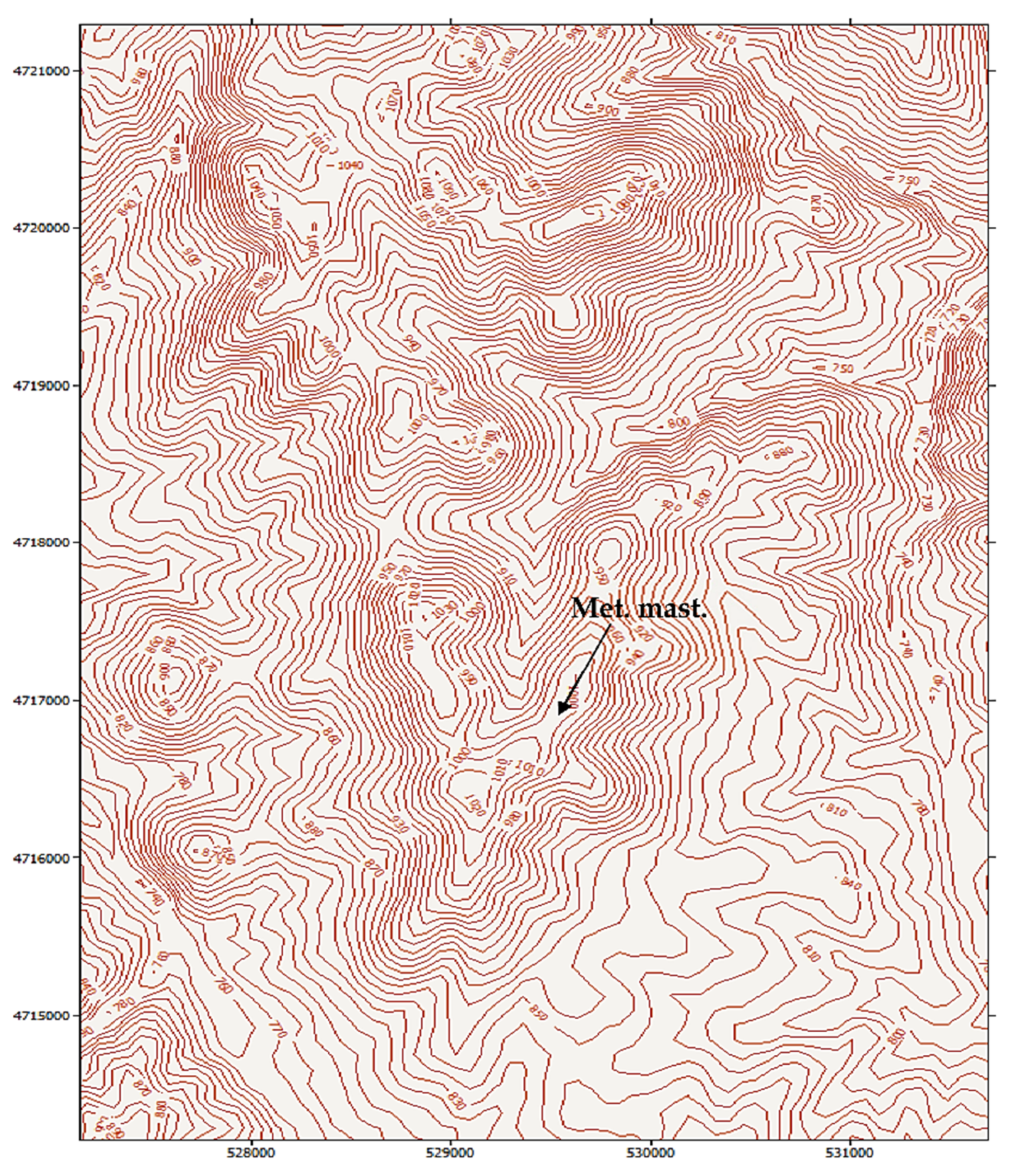
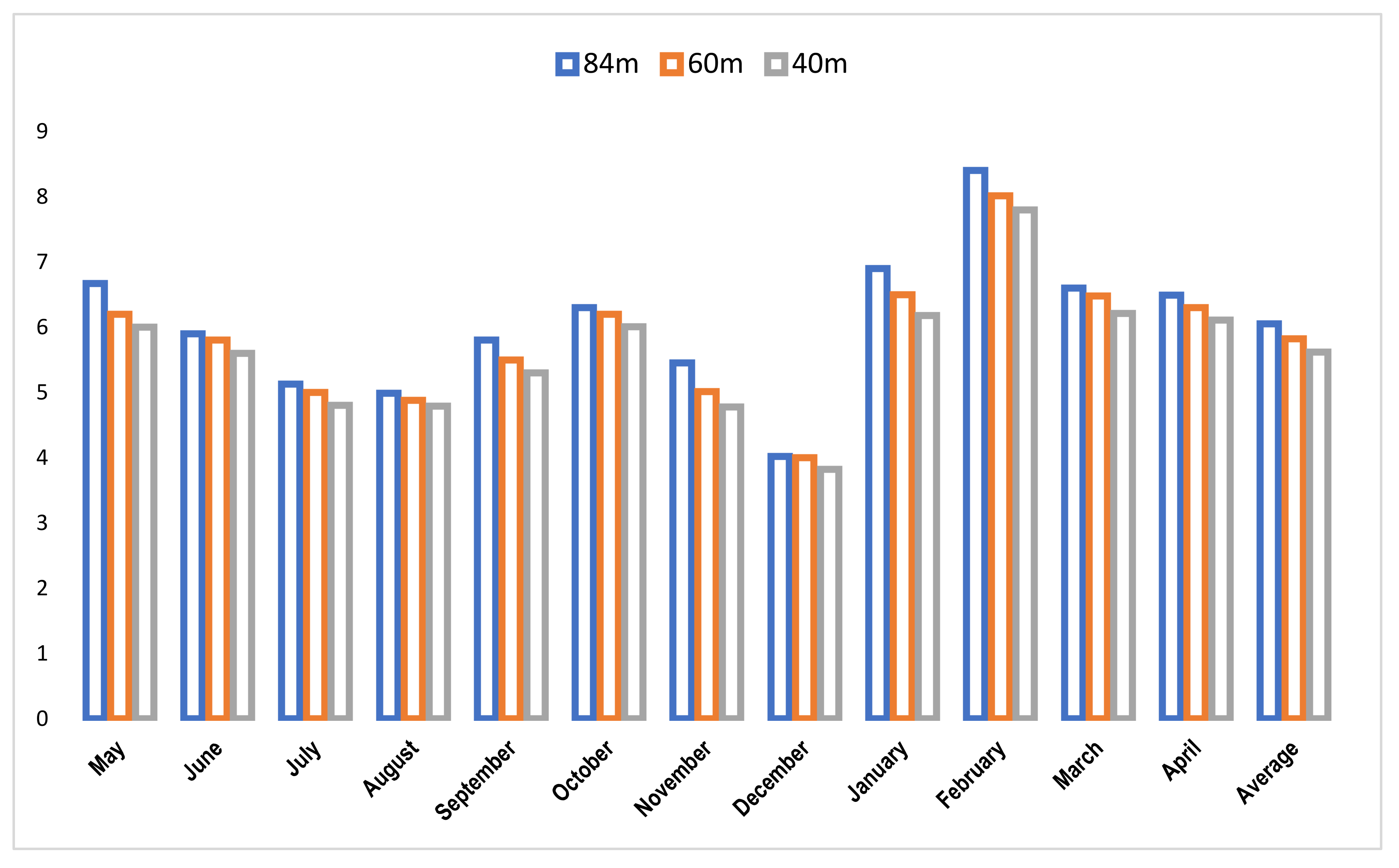
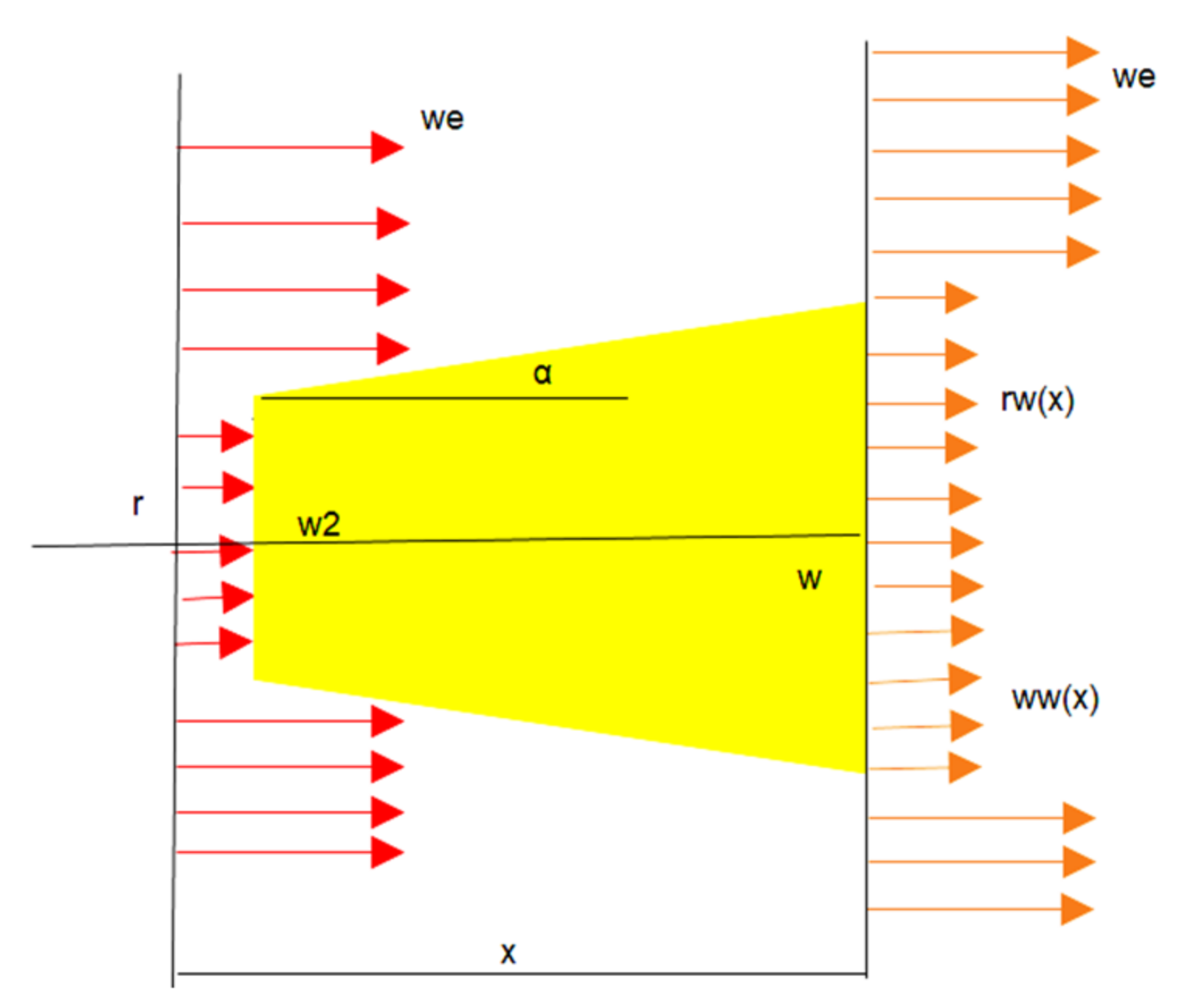
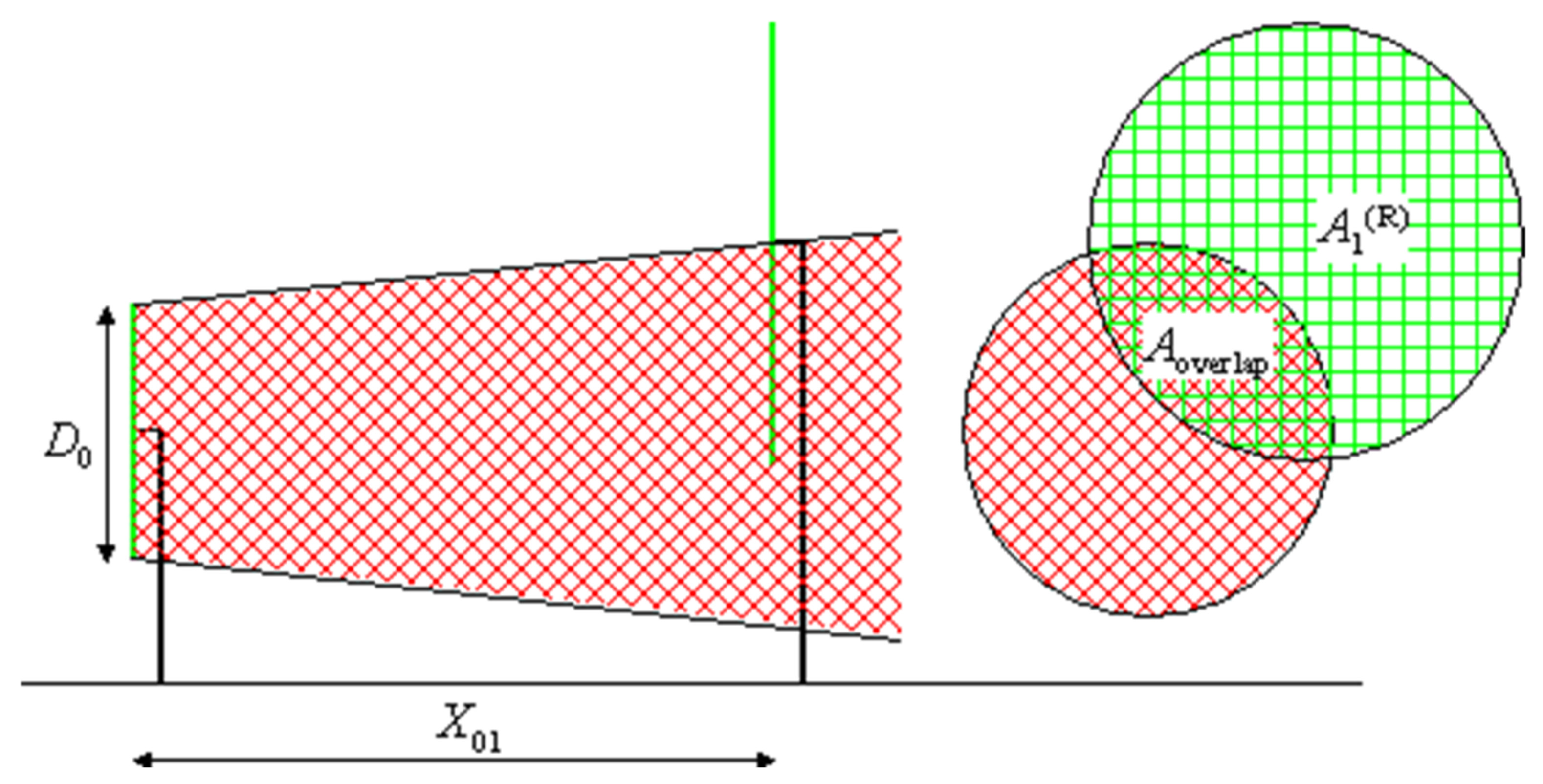
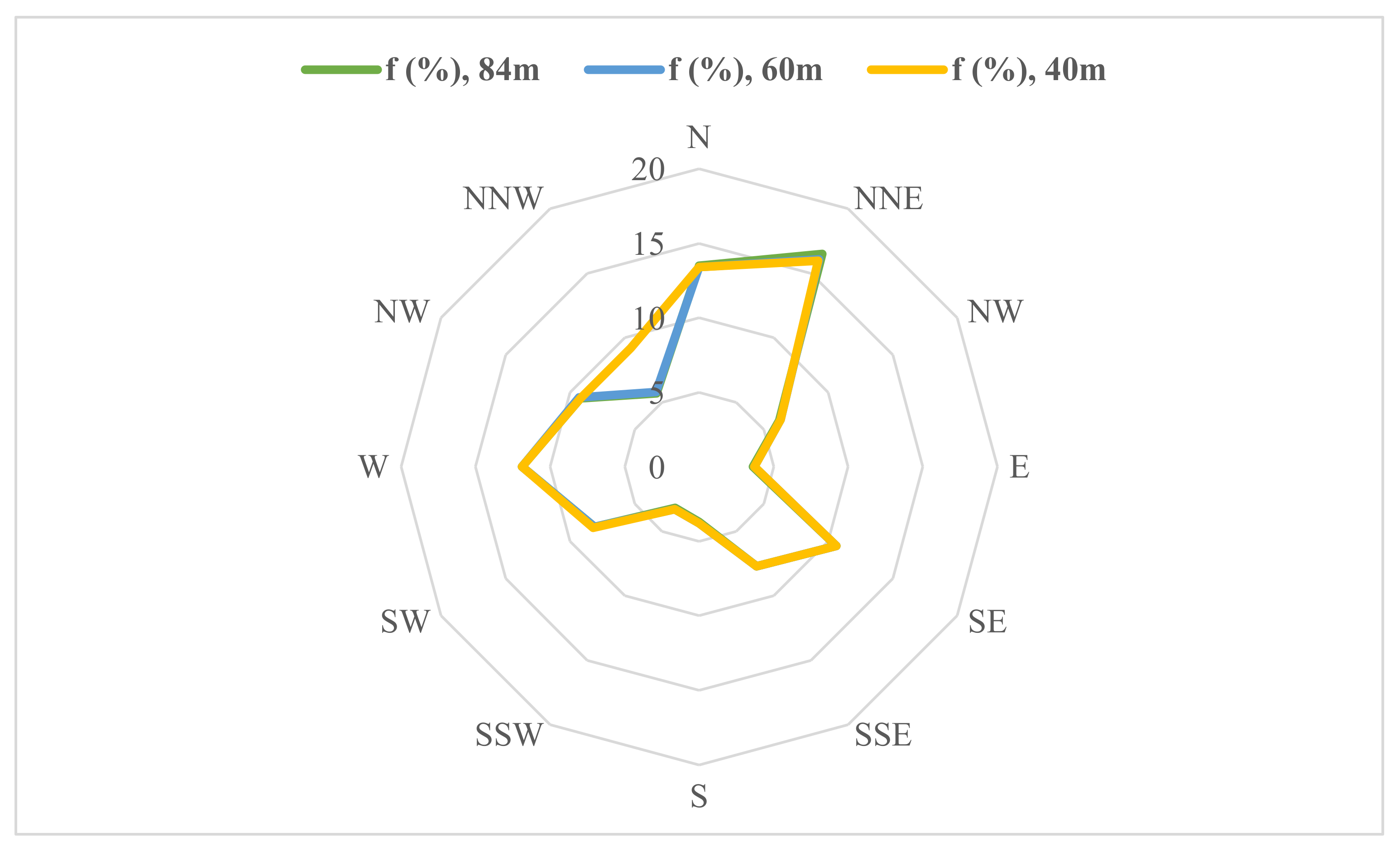
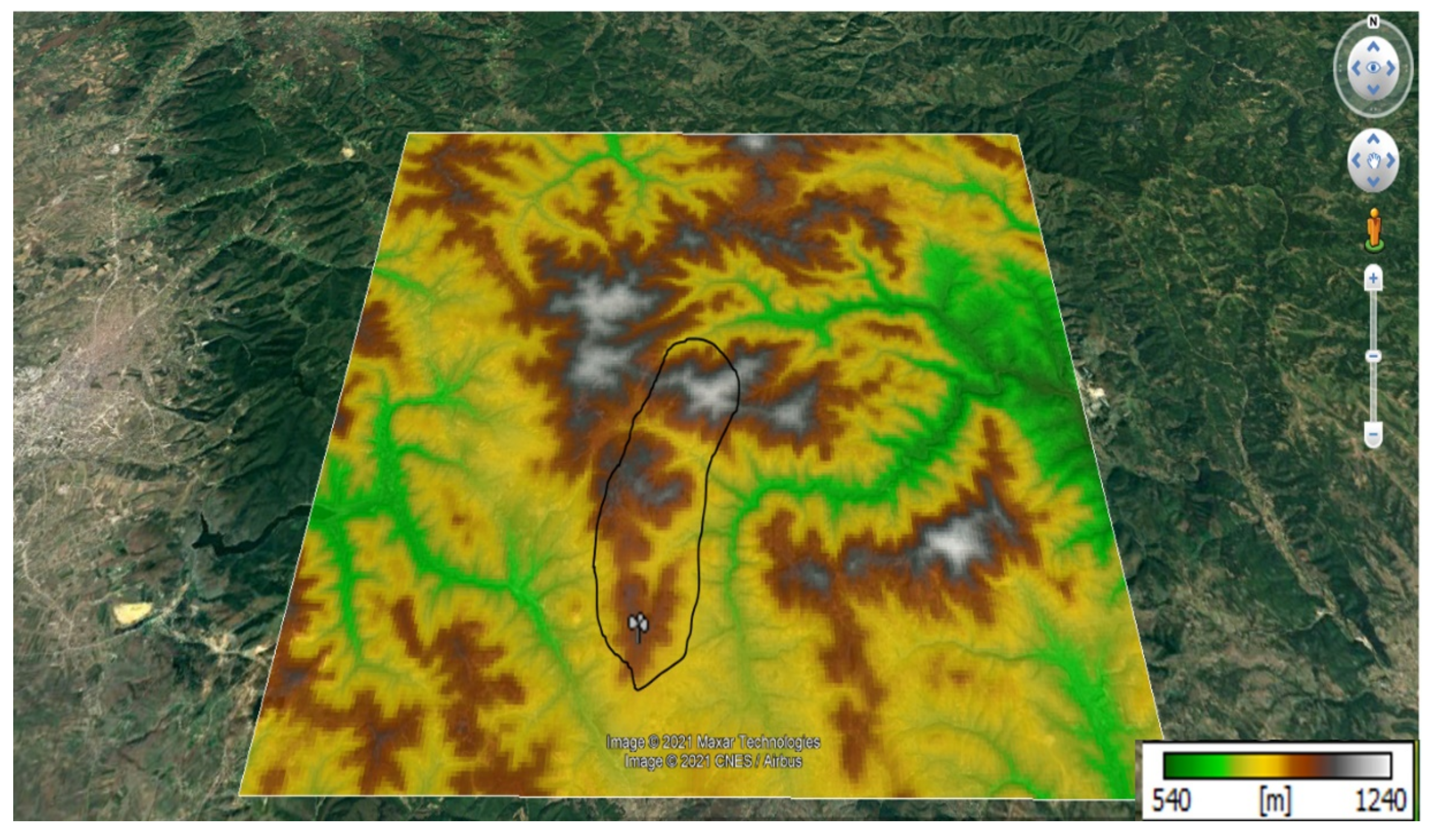
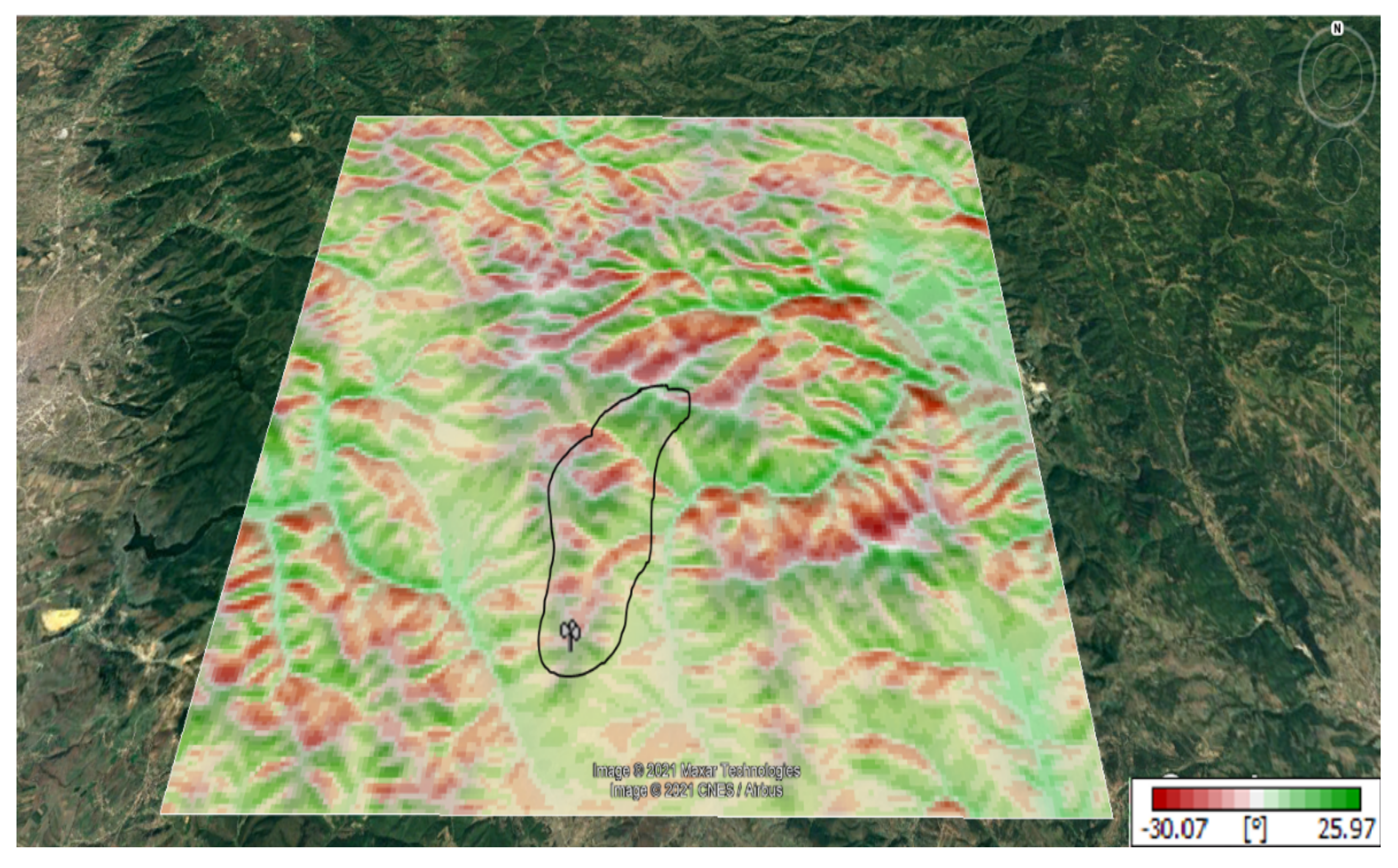
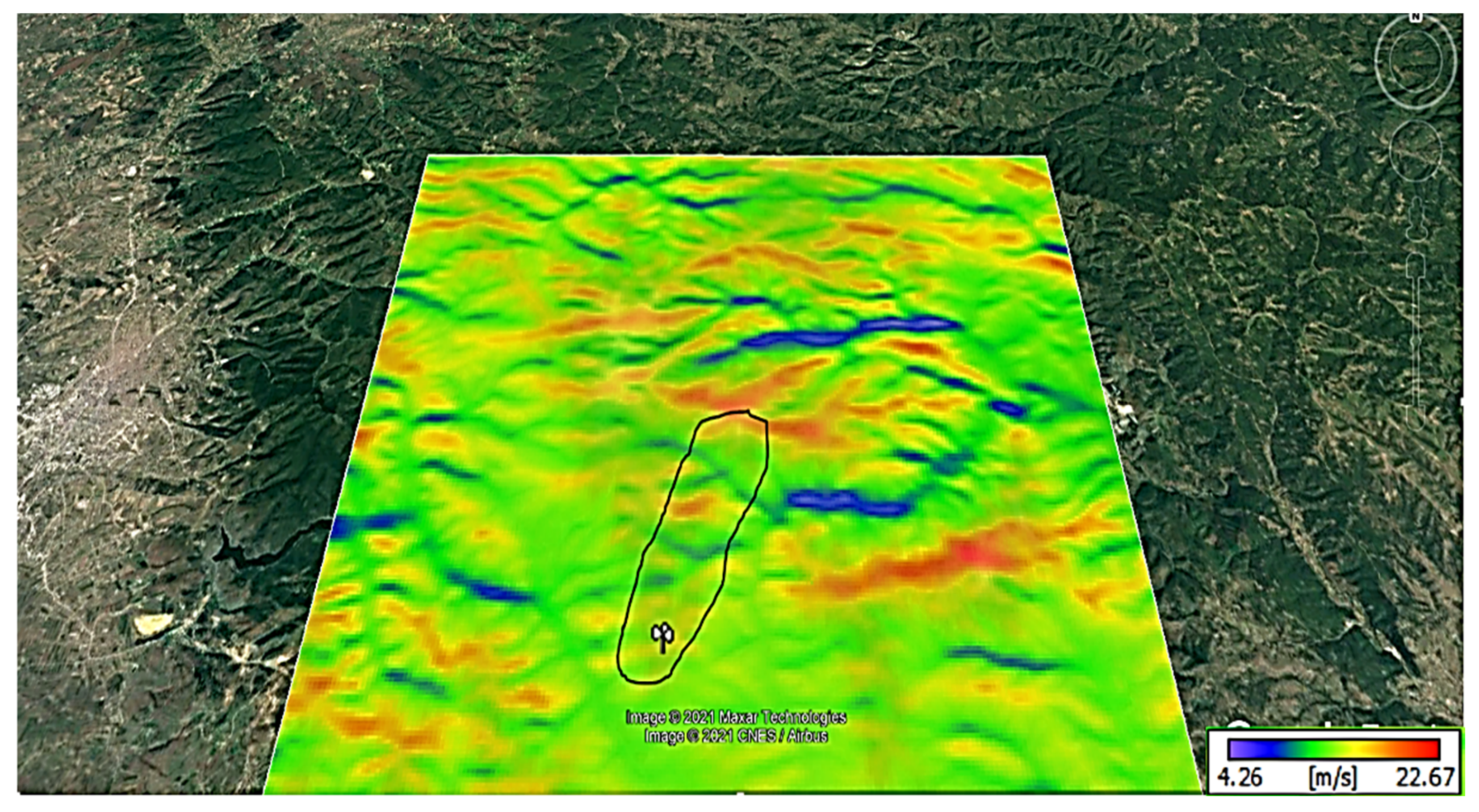
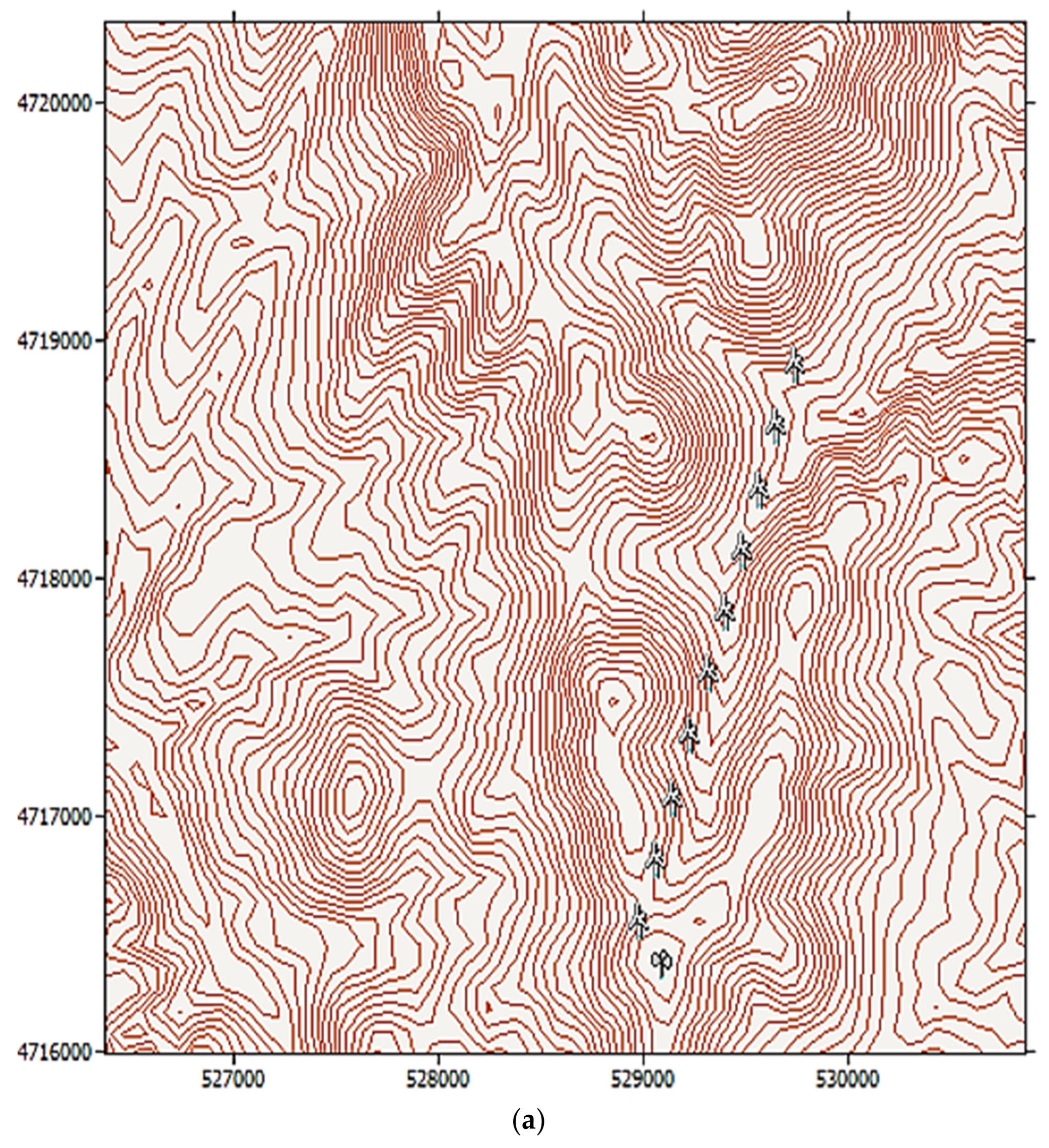
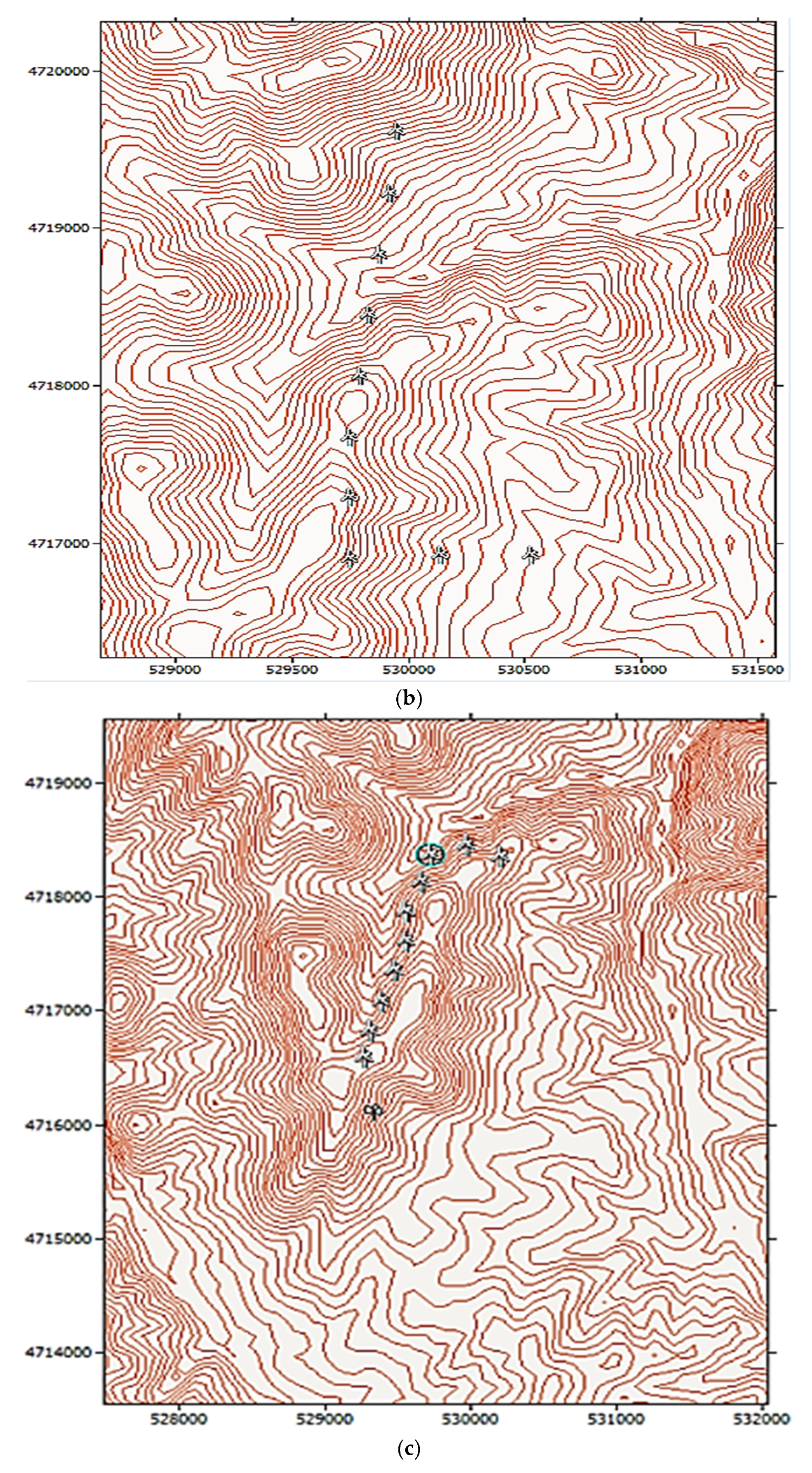
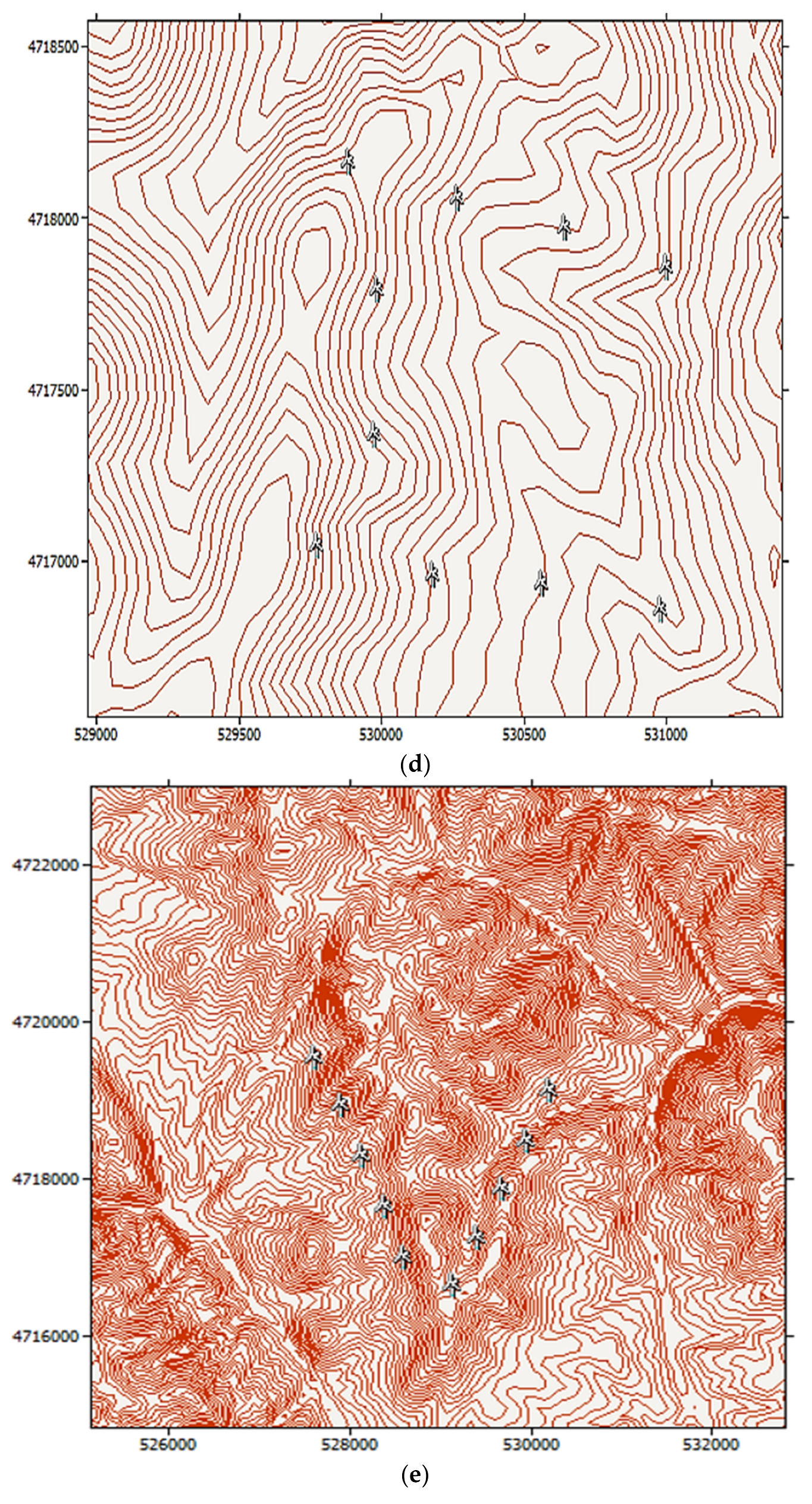
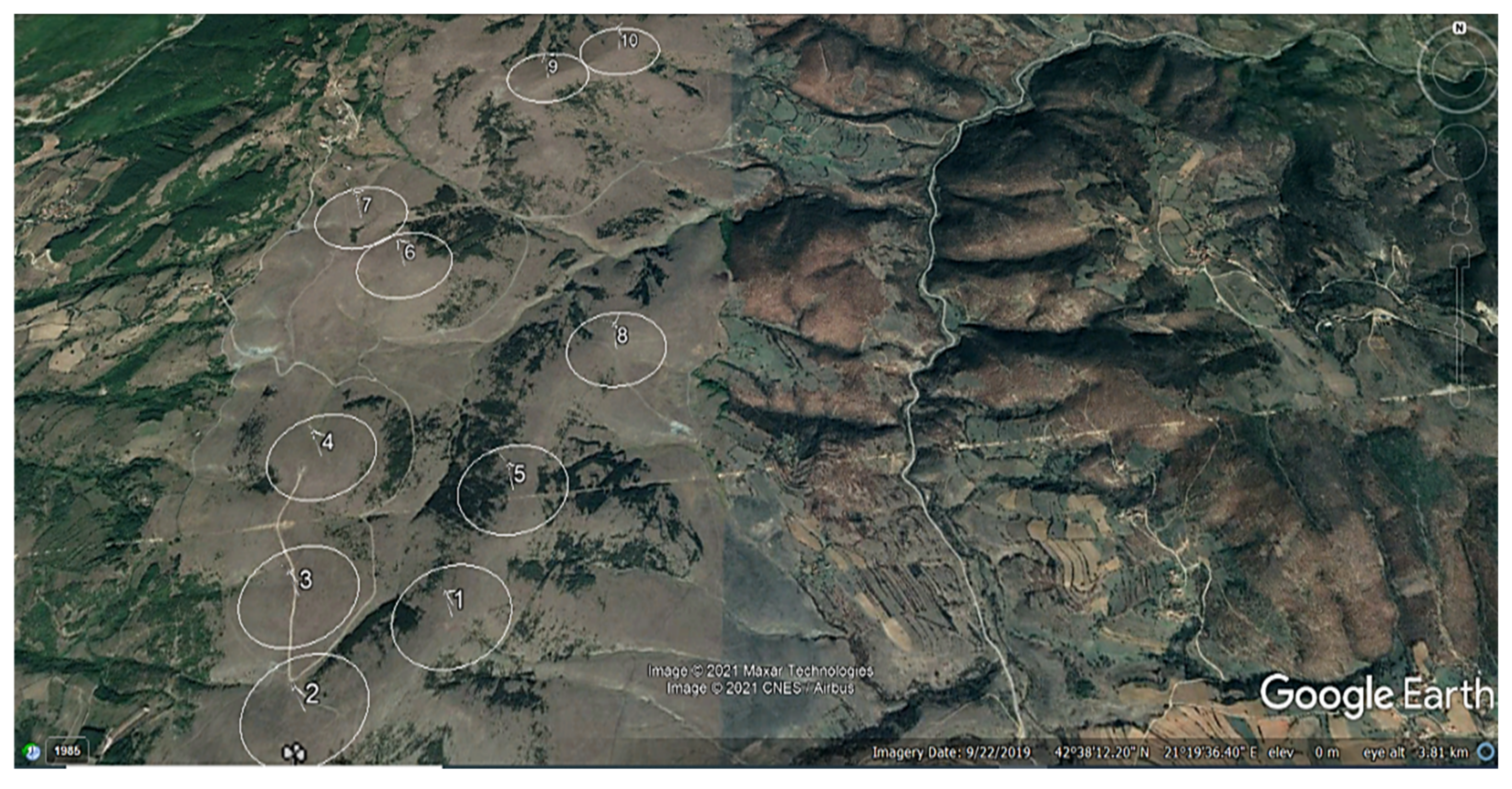
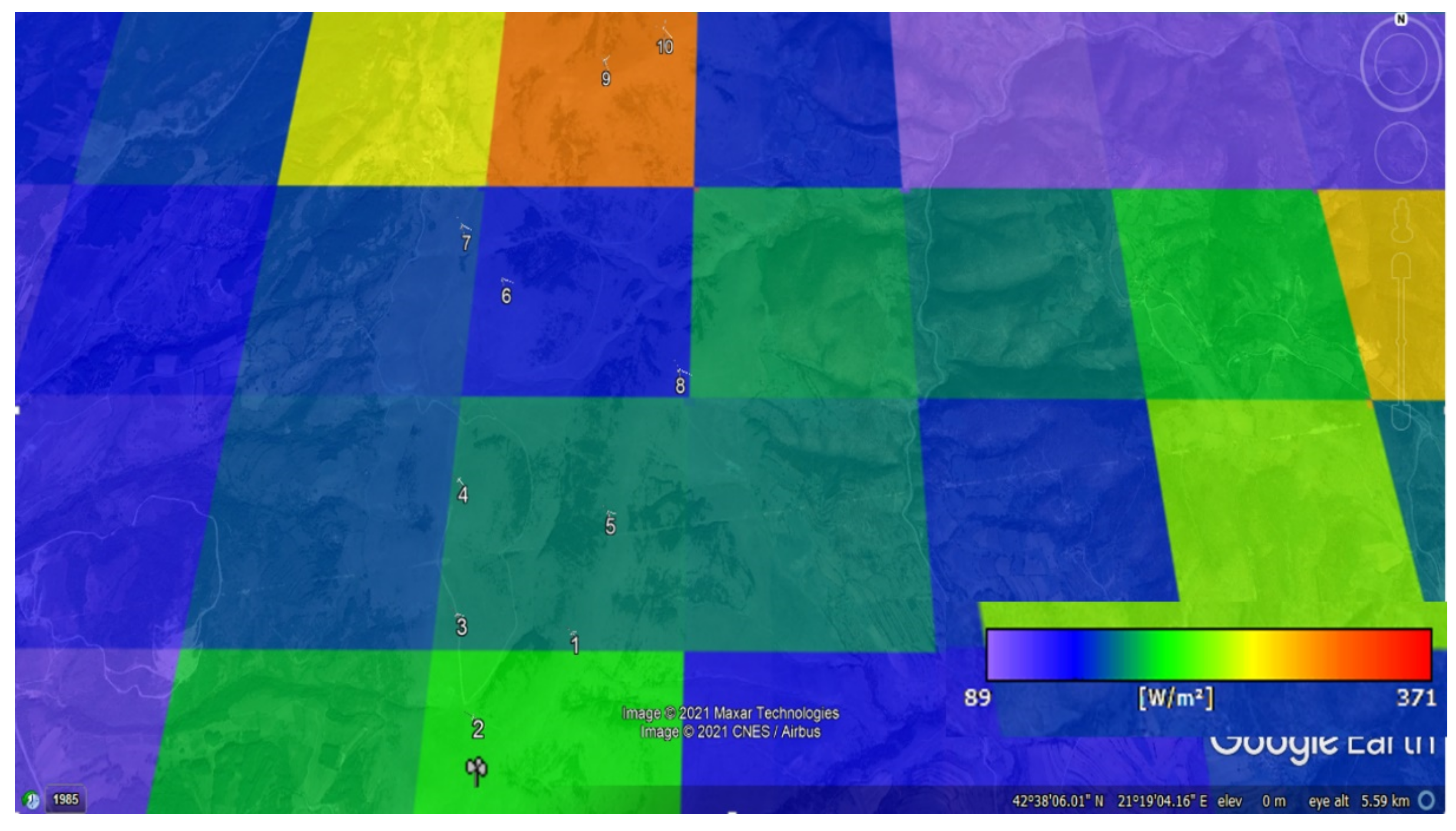
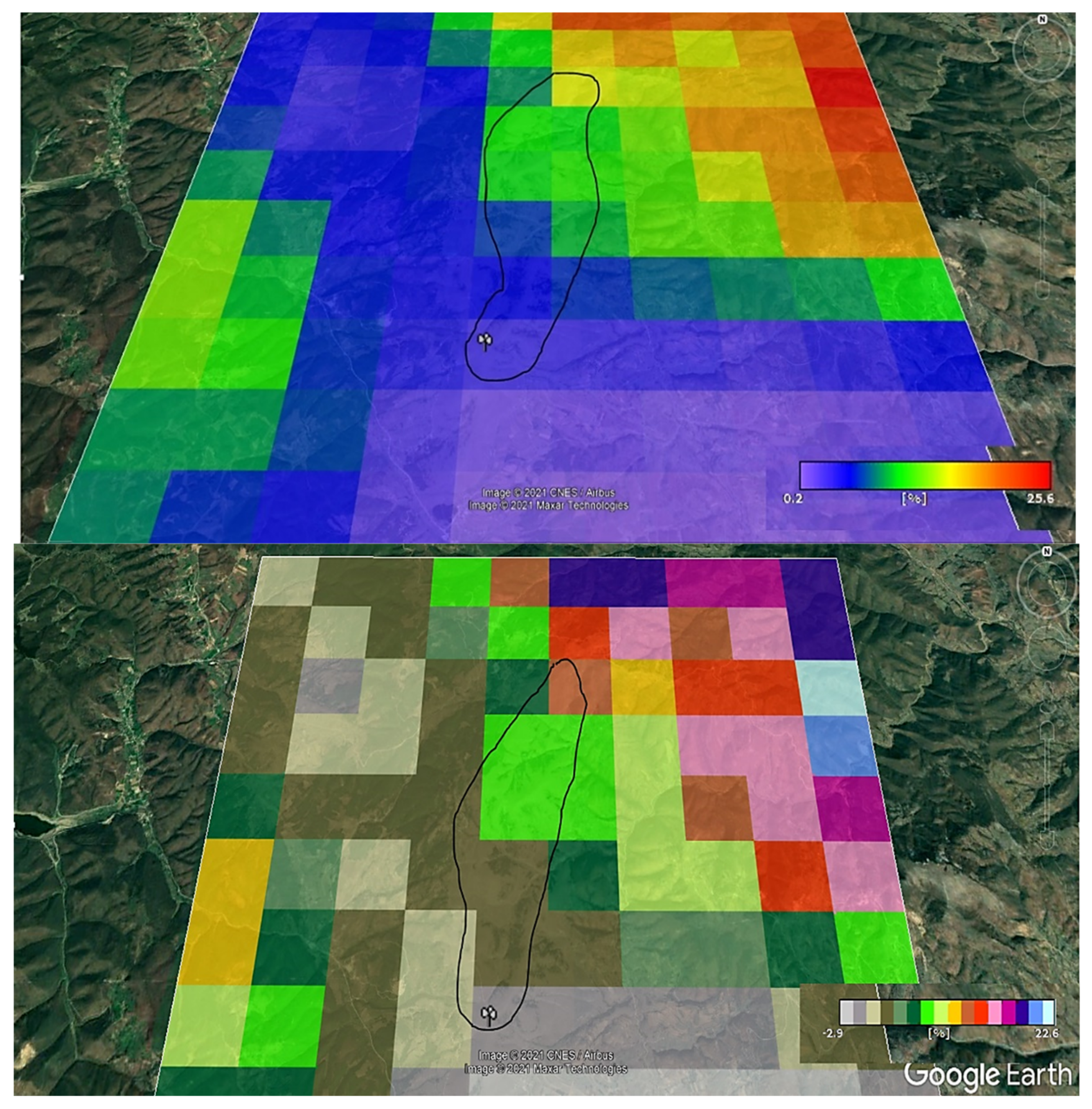
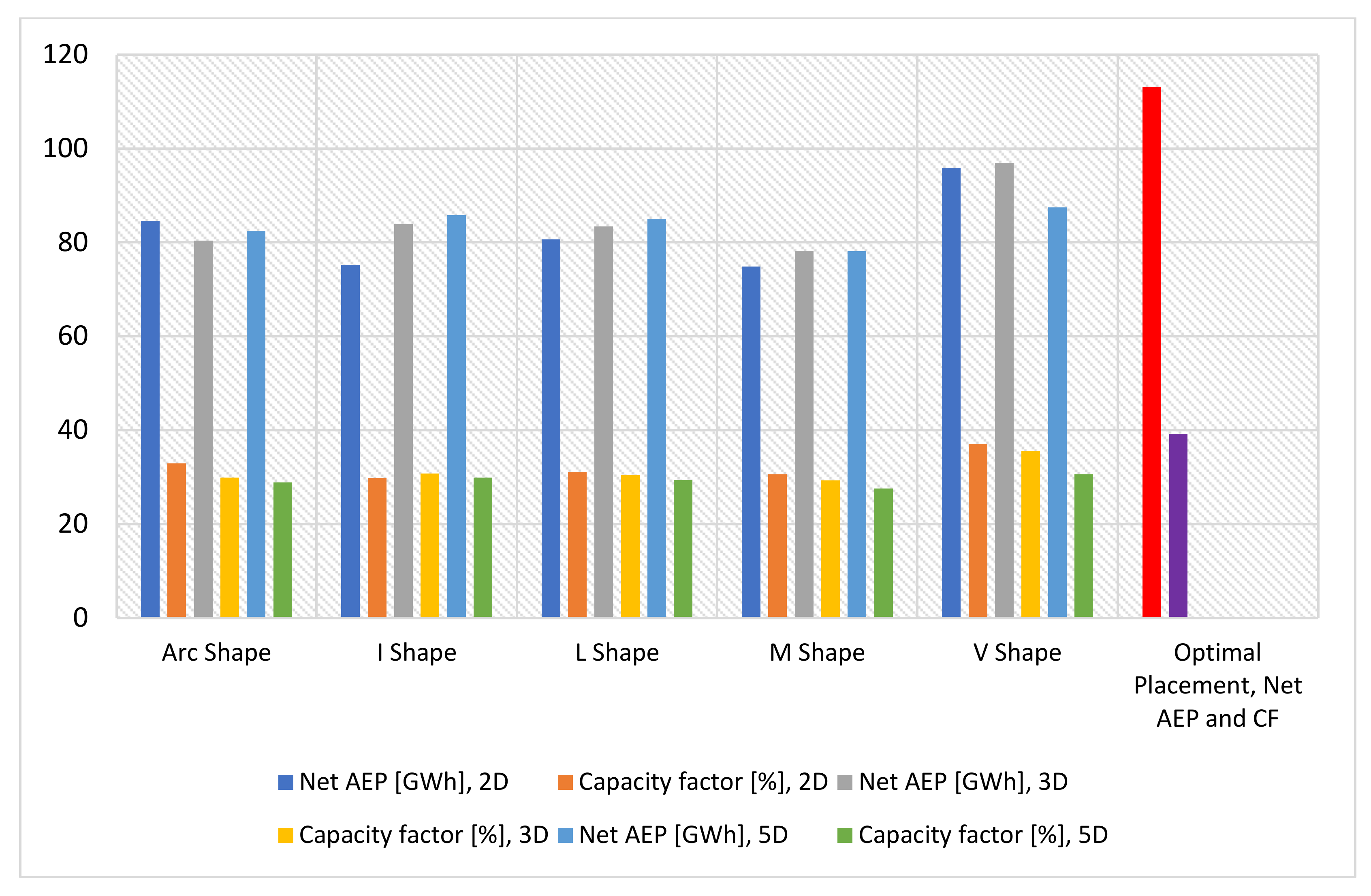
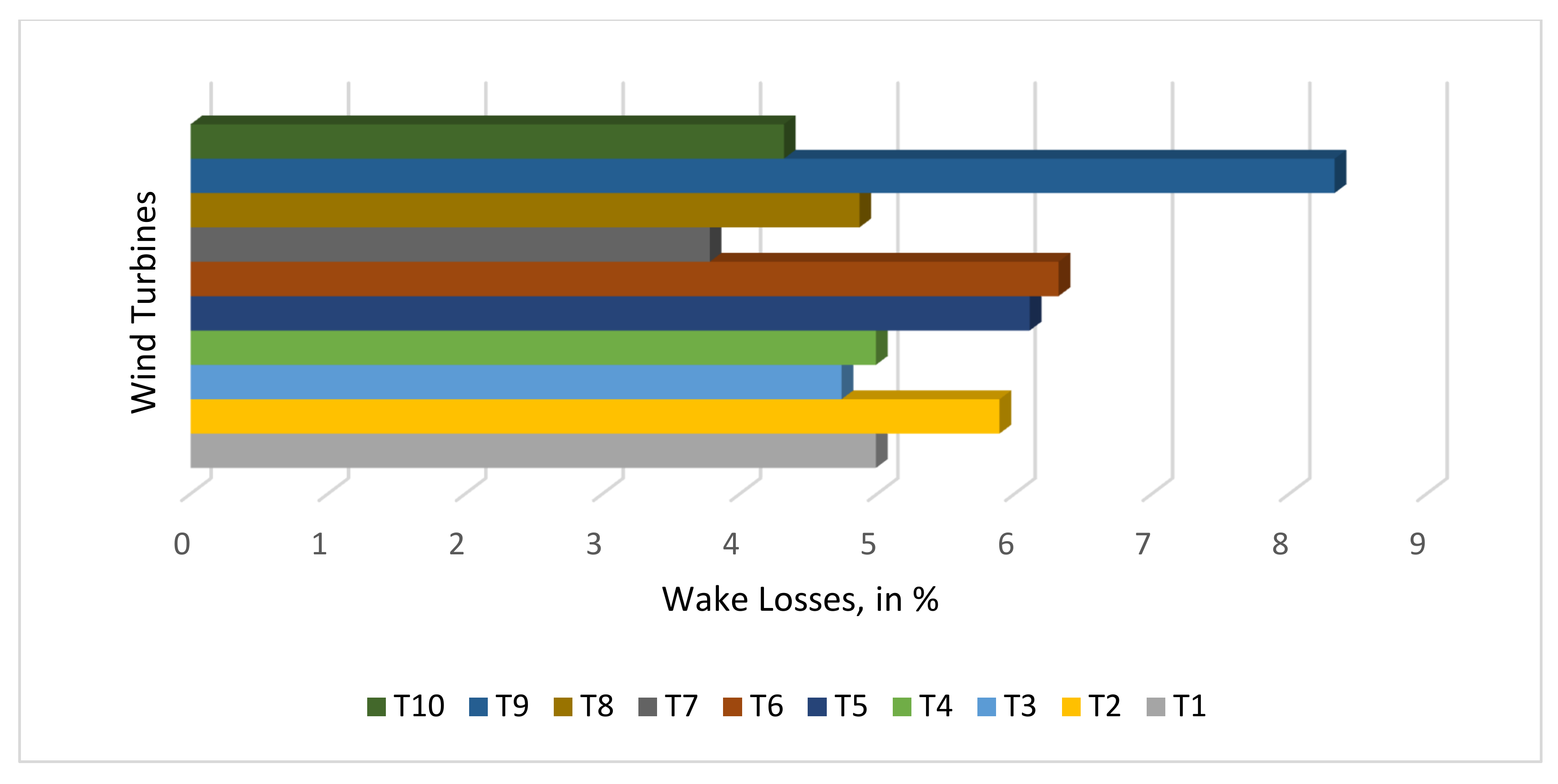
Publisher’s Note: MDPI stays neutral with regard to jurisdictional claims in published maps and institutional affiliations. |
© 2022 by the authors. Licensee MDPI, Basel, Switzerland. This article is an open access article distributed under the terms and conditions of the Creative Commons Attribution (CC BY) license (https://creativecommons.org/licenses/by/4.0/).
Share and Cite
Hoxha, B.; Shesho, I.K.; Filkoski, R.V. Analysis of Wind Turbine Distances Using a Novel Techno-Spatial Approach in Complex Wind Farm Terrains. Sustainability 2022, 14, 13688. https://doi.org/10.3390/su142013688
Hoxha B, Shesho IK, Filkoski RV. Analysis of Wind Turbine Distances Using a Novel Techno-Spatial Approach in Complex Wind Farm Terrains. Sustainability. 2022; 14(20):13688. https://doi.org/10.3390/su142013688
Chicago/Turabian StyleHoxha, Bukurije, Igor K. Shesho, and Risto V. Filkoski. 2022. "Analysis of Wind Turbine Distances Using a Novel Techno-Spatial Approach in Complex Wind Farm Terrains" Sustainability 14, no. 20: 13688. https://doi.org/10.3390/su142013688
APA StyleHoxha, B., Shesho, I. K., & Filkoski, R. V. (2022). Analysis of Wind Turbine Distances Using a Novel Techno-Spatial Approach in Complex Wind Farm Terrains. Sustainability, 14(20), 13688. https://doi.org/10.3390/su142013688







